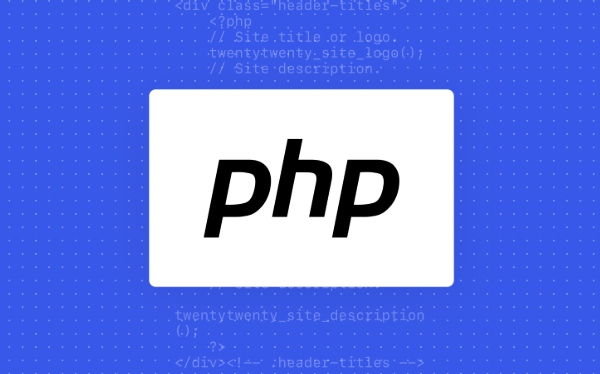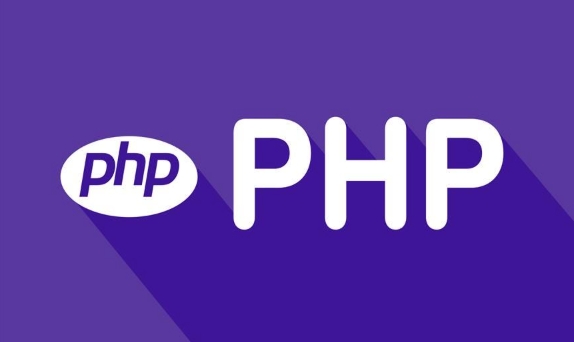There are three main ways to convert objects into arrays in PHP. 1. Use (array) casting is suitable for simple objects, but private attributes will be prefixed with class name, affecting the key name; 2. Use json_encode and json_decode to combine nested structures and ignore access modifiers, but resources and closures will be discarded; 3. Write recursive functions to finely control the conversion process, which is suitable for complex object structures, and can expand processing logic; in addition, attention should be paid to the impact of access control on key names, the inability to convert resources and closures, the need for additional processing of special objects, and performance issues. Just select the appropriate method according to the object structure and needs.

In PHP, converting objects into arrays is a common requirement, especially when handling JSON data, database results, or API responses. While PHP provides some simple ways to convert, sometimes the default behavior may not be as expected, especially if the object contains nested objects or private properties.

1. Basic conversion: Use type conversion (array)
The easiest way is to use (array) cast:
$myArray = (array) $myObject;
This method is suitable for simple objects, but the following points need to be paid attention to:

- Public properties retain the original name;
- Protected properties will be preceded by
*and spaces; - Private attributes will prepend class names and spaces;
This will cause the keys of the array to become complicated and are not conducive to subsequent processing.
2. Use json_decode and json_encode combination
This is a "short" method commonly used by many people, especially suitable for nested objects:

$myArray = json_decode(json_encode($myObject), true);
The principle of this method is:
- First use
json_encodeto convert the object into a JSON string; - Then use
json_decodeto convert the string into an array, and set the second parameter totrueto return the associative array;
The advantage is that it is OK to handle nested structures and ignore the effects of access modifiers. The disadvantage is that if there is a resource type (such as a database connection) or a closure function in the object, it will be discarded.
3. Custom recursive functions to handle complex objects
If you need more granular control, such as handling private properties, nested objects, or want to preserve certain structures, you can write a recursive function:
function objectToArray($object) {
if (is_object($object)) {
$object = get_object_vars($object);
}
return array_map(function($value) {
return is_object($value) || is_array($value) ? objectToArray($value) : $value;
}, $object);
}The idea of this function is:
- If it is an object, first use
get_object_varsto get all attributes; - Then process each value recursively;
- No matter how deep the nesting is, it will eventually be converted into an array;
This method is suitable for complex structures and also allows you to extend logic as needed, such as filtering certain properties or performing type conversions.
4. Precautions and FAQs
- Access control affects key names : When using
(array)conversion, the private attribute name will be prefixed with the class name; - Resources and closures cannot be converted : resource types such as file handles, PDO objects, or anonymous functions cannot be converted correctly;
- Date objects or special classes need to be processed : For example,
DateTimeobjects may become empty or have unclear structures after being converted into an array, and additional processing is required; - Performance considerations : If the data volume is large, using
json_encode/decodemay affect performance. It is recommended to use recursive functions to optimize the processing at this time;
Basically that's it. Just choose the right method according to your object structure and needs, it is not complicated but it is easy to ignore details.
The above is the detailed content of php function to convert object to array. For more information, please follow other related articles on the PHP Chinese website!

Hot AI Tools

Undress AI Tool
Undress images for free

Undresser.AI Undress
AI-powered app for creating realistic nude photos

AI Clothes Remover
Online AI tool for removing clothes from photos.

Clothoff.io
AI clothes remover

Video Face Swap
Swap faces in any video effortlessly with our completely free AI face swap tool!

Hot Article

Hot Tools

Notepad++7.3.1
Easy-to-use and free code editor

SublimeText3 Chinese version
Chinese version, very easy to use

Zend Studio 13.0.1
Powerful PHP integrated development environment

Dreamweaver CS6
Visual web development tools

SublimeText3 Mac version
God-level code editing software (SublimeText3)
 PHP Variable Scope Explained
Jul 17, 2025 am 04:16 AM
PHP Variable Scope Explained
Jul 17, 2025 am 04:16 AM
Common problems and solutions for PHP variable scope include: 1. The global variable cannot be accessed within the function, and it needs to be passed in using the global keyword or parameter; 2. The static variable is declared with static, and it is only initialized once and the value is maintained between multiple calls; 3. Hyperglobal variables such as $_GET and $_POST can be used directly in any scope, but you need to pay attention to safe filtering; 4. Anonymous functions need to introduce parent scope variables through the use keyword, and when modifying external variables, you need to pass a reference. Mastering these rules can help avoid errors and improve code stability.
 How to handle File Uploads securely in PHP?
Jul 08, 2025 am 02:37 AM
How to handle File Uploads securely in PHP?
Jul 08, 2025 am 02:37 AM
To safely handle PHP file uploads, you need to verify the source and type, control the file name and path, set server restrictions, and process media files twice. 1. Verify the upload source to prevent CSRF through token and detect the real MIME type through finfo_file using whitelist control; 2. Rename the file to a random string and determine the extension to store it in a non-Web directory according to the detection type; 3. PHP configuration limits the upload size and temporary directory Nginx/Apache prohibits access to the upload directory; 4. The GD library resaves the pictures to clear potential malicious data.
 Commenting Out Code in PHP
Jul 18, 2025 am 04:57 AM
Commenting Out Code in PHP
Jul 18, 2025 am 04:57 AM
There are three common methods for PHP comment code: 1. Use // or # to block one line of code, and it is recommended to use //; 2. Use /.../ to wrap code blocks with multiple lines, which cannot be nested but can be crossed; 3. Combination skills comments such as using /if(){}/ to control logic blocks, or to improve efficiency with editor shortcut keys, you should pay attention to closing symbols and avoid nesting when using them.
 How Do Generators Work in PHP?
Jul 11, 2025 am 03:12 AM
How Do Generators Work in PHP?
Jul 11, 2025 am 03:12 AM
AgeneratorinPHPisamemory-efficientwaytoiterateoverlargedatasetsbyyieldingvaluesoneatatimeinsteadofreturningthemallatonce.1.Generatorsusetheyieldkeywordtoproducevaluesondemand,reducingmemoryusage.2.Theyareusefulforhandlingbigloops,readinglargefiles,or
 Tips for Writing PHP Comments
Jul 18, 2025 am 04:51 AM
Tips for Writing PHP Comments
Jul 18, 2025 am 04:51 AM
The key to writing PHP comments is to clarify the purpose and specifications. Comments should explain "why" rather than "what was done", avoiding redundancy or too simplicity. 1. Use a unified format, such as docblock (/*/) for class and method descriptions to improve readability and tool compatibility; 2. Emphasize the reasons behind the logic, such as why JS jumps need to be output manually; 3. Add an overview description before complex code, describe the process in steps, and help understand the overall idea; 4. Use TODO and FIXME rationally to mark to-do items and problems to facilitate subsequent tracking and collaboration. Good annotations can reduce communication costs and improve code maintenance efficiency.
 Quick PHP Installation Tutorial
Jul 18, 2025 am 04:52 AM
Quick PHP Installation Tutorial
Jul 18, 2025 am 04:52 AM
ToinstallPHPquickly,useXAMPPonWindowsorHomebrewonmacOS.1.OnWindows,downloadandinstallXAMPP,selectcomponents,startApache,andplacefilesinhtdocs.2.Alternatively,manuallyinstallPHPfromphp.netandsetupaserverlikeApache.3.OnmacOS,installHomebrew,thenrun'bre
 How to access a character in a string by index in PHP
Jul 12, 2025 am 03:15 AM
How to access a character in a string by index in PHP
Jul 12, 2025 am 03:15 AM
In PHP, you can use square brackets or curly braces to obtain string specific index characters, but square brackets are recommended; the index starts from 0, and the access outside the range returns a null value and cannot be assigned a value; mb_substr is required to handle multi-byte characters. For example: $str="hello";echo$str[0]; output h; and Chinese characters such as mb_substr($str,1,1) need to obtain the correct result; in actual applications, the length of the string should be checked before looping, dynamic strings need to be verified for validity, and multilingual projects recommend using multi-byte security functions uniformly.
 Learning PHP: A Beginner's Guide
Jul 18, 2025 am 04:54 AM
Learning PHP: A Beginner's Guide
Jul 18, 2025 am 04:54 AM
TolearnPHPeffectively,startbysettingupalocalserverenvironmentusingtoolslikeXAMPPandacodeeditorlikeVSCode.1)InstallXAMPPforApache,MySQL,andPHP.2)Useacodeeditorforsyntaxsupport.3)TestyoursetupwithasimplePHPfile.Next,learnPHPbasicsincludingvariables,ech






